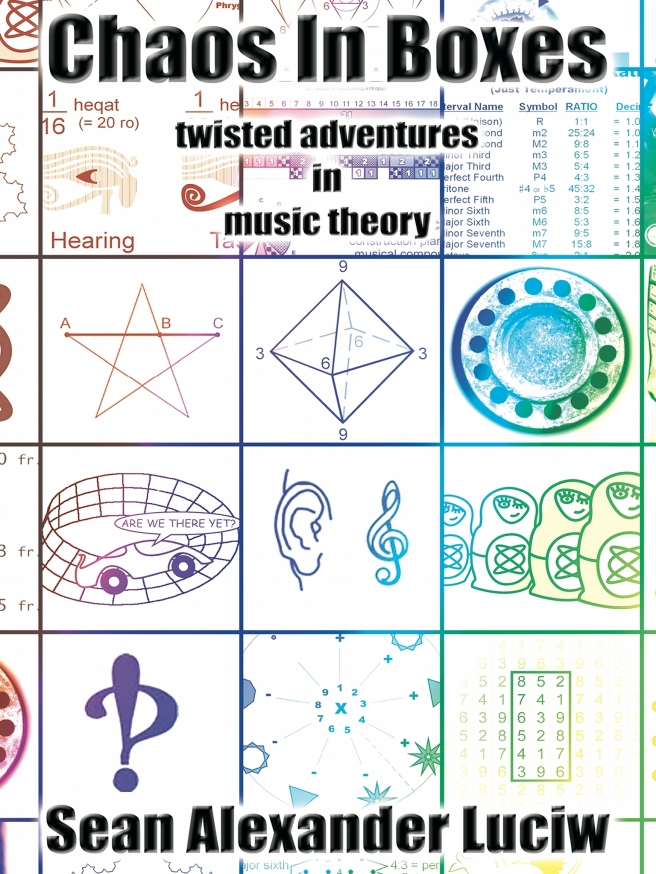Burly Q
Kamloops Burlesque staged their 60th show last night at The Blue Grotto, with music provided by The Sassy Gents, my duo with Justin Bentley. It’s always a blast, although quite honestly I’m usually a little distracted by guitaristic concerns so I end up missing half the show. We play instrumental double-guitar acoustic versions of various awesome tunes. Last night, for the Christmas theme, sly dogs that we are, we incorporated some Star Wars tunes into the mix – by meshing the Darth Vader theme with Good King Wenceslas, for example. After all, the new Star Wars movie is definitely stealing some of the spotlight from Xmas this year. We also played a couple of Stone Temple Pilot tunes, in tribute. I’ve recently discovered that I love playing slide guitar. The burlesque performers are all so friendly and the audience is so appreciative, it’s really nice to be part of this.
Q-Carbon
A while back, I wrote a book about music and numbers and stuff. It’s called “Chaos In Boxes: twisted adventures in music theory” and it was published in 2008 by a Canadian micro-publisher called Produce Press, who created beautifully handmade Limited Editions. Since then it has expanded into the Print-On-Demand format, e-Book format and e-Book with audio format. “Chaos In Boxes” is a healthy mix of seriousness and absurdity.

Well, an interesting article showed up very recently in my Facebook feed, concerning the discovery of a new phase of Carbon called Q-Carbon! This relates to one of the Appendices in “Chaos In Boxes,” where I drew a parallel between the 2 then-known phases of Carbon (Graphite and Diamond) and the digital roots of certain Solfeggio frequencies, which alternate from 6 to 3 and back again when subjected to octave transpositions. Out of the 6 Solfeggio Tones (which are completely unrelated to the Major Scale, btw), only 4 of them are subject to this transformation. The other two frequencies maintain their digital root of 9, since 9 times any number still has digits adding up to 9.

I decided that the oscillating digital roots imply two different phases of the tones Re, Mi, Sol, and La, and correspond perfectly to carbon’s two phases, which are Diamond and Graphite. The non-transforming Tones (Ut and Fa) were not able to fit into the analogy of Carbon allotropes, as they had nothing to correspond to…
Until now, that is!
Ut and Fa correspond to Q-Carbon. Voila! A bonus concept for this new element of my metaphor, pretty as a picture, is stability. Solfeggio Tones Ut and Fa are more steadfast than Re, Mi, Sol and La in their non-reaction to octave transpositions, since their digital roots remain unaltered when their frequencies are subjected to octave-transposition (ie. division or multiplication by 2). Well, this newfound Q-Carbon is harder than diamonds! Very stable, wouldn’t you say? How appropriate.
Another point of parallel is magnetism. Apparently, Q-Carbon is ferromagnetic. Since Re, Mi, Sol and La oscillate whereas Ut and Fa do not, it seems to me that Ut and Fa serve as some sort of rotational axis about which the other tones orbit. In my mind, gravitational pull is akin to magnetic attraction and therefore Q-Carbon’s correlation to Ut and Fa at the centre position of the metaphoric Trinity is reasonable.
So: Ut and Fa (transposed or not) correspond to Q-Carbon. Re, Mi, Sol and La correspond to Diamond (untransposed) and Graphite (when transposed by any odd number of octaves).
Q.E.D., mo-fo’s!
P.S. If you’re in the Vernon area, “Chaos In Boxes” is now available at Record City Kelectibles!
End of report.
SL